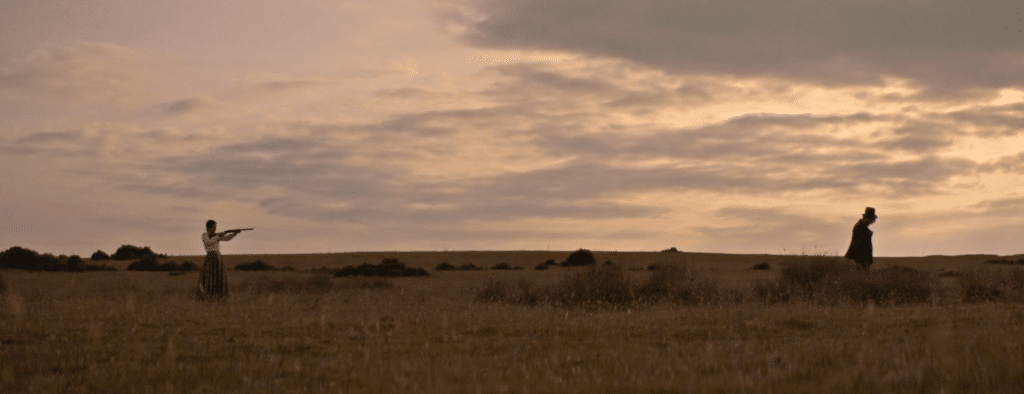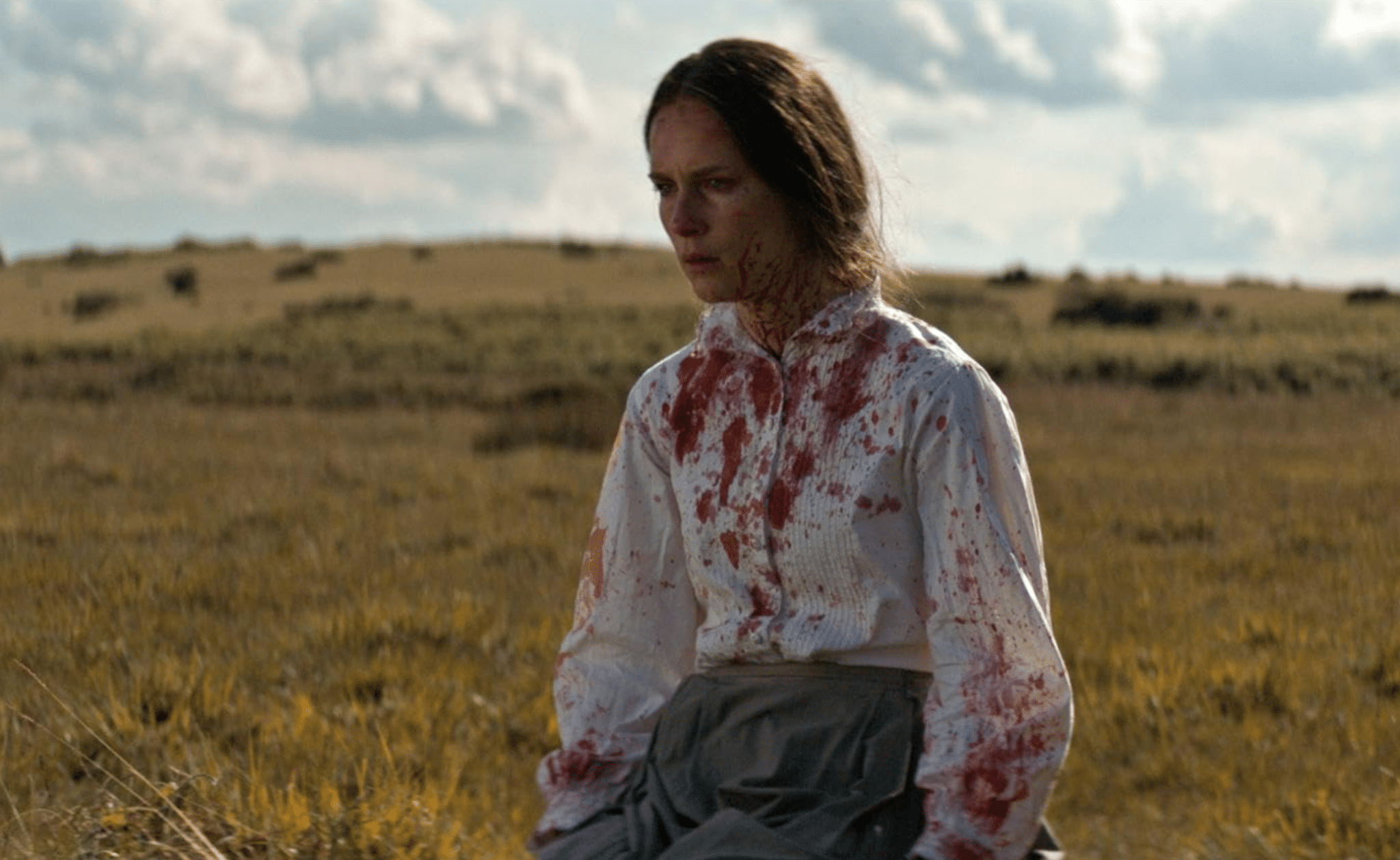
It’s no surprise at all that frontier horror, or Wild West horror, continues to hold such great potential for new storytelling. Consider it: an uncertain, changeable point in history; the arrival of immigrants from different parts of the world, coming together as strangers in a strange land; the land itself, potentially hostile, unknown and peopled with monsters of its own folklore, some familiar-seeming, some new. There have been superb horror stories set against this background, and these continue to be made, such as in the case of Who Goes There? (2020), a brilliant short film which blends old and new supernatural beliefs, generating abundant scares and unease.
We begin as we (almost) end – with one, guttering firelight against the darkness. A man (Liam McMahon) sits at a fire, somewhere out on the prairie. He seems a little ill at ease, perhaps as anyone might, stuck out there in the remote and unfamiliar darkness – but, suddenly, he is troubled by a sound. It’s the kind of sound which should be impossible, if he’s genuinely alone – as he hears a whistle. He peers into the darkness, clearly alarmed, and – we cut to the opening credits. The man’s situation features in our story, but we move on for now, seeing the same area in daylight (somewhat gratefully: shooting at night can be tough to get right, but director Astrid Thorvaldsen and her team nail it, taking only a few minutes to bring us a genuinely unsettling, almost pitch-black scene). Now, a young woman, Ingrid (Nina Yndis) is gathering medicinal plants to take back to the tiny shack which she shares with sisters Liv (Siri Meland) and the youngest, Ada (Rikke Haughem). Ada is dangerously ill: her illness presents a little like tuberculosis, but there are other symptoms, too. Safe to say, she is in desperate need of care which she is never likely to receive, not all the way out here. It’s not immediately made clear why there are three unaccompanied young women living in this way, but you get an immediate sense of how harried and easily alarmed they are; why would they not be? They are possibly days away from any kind of help. So, when a strange man appears on the edge of their property, they are terrified.
The women’s remote, pressured existence is about to be put under further pressure: this man is the terrified man from earlier in the film, and he now appears ill, confused. When a terrified Ingrid approaches him and tries to scare him off her property, he simply asks for a drink of water before collapsing; her better nature gets the better of her, and she helps him to the porch, giving him the water he asks for. Liv is outraged; there’s now a potential threat amongst them, but when he casually mentions that he’s a travelling doctor, beset by bandits and lost on his way to his next call, it seems both plausible and tantalising; Ada really, really needs any sort of medical help she can get. But can this stranger, who has thrown himself on the mercy of these women, really be trusted?
The vulnerability of three young sisters in such a remote location could be horror enough, and Who Goes There? knows this: alongside the sisters, the audience is made to feel doubt about what is going on here, and whether very worldly, or otherworldly horror is threatening to break out. Then the film cleverly escalates the threat, building in a well-paced, simmering supernatural element. The sisters each respond differently to this, depending on the level of either their desperation, their fear, or even hope. Their code-switching between Norwegian and English is also important, highlighting that the film is set at a relatively early point in American colonial history, when immigrants held onto their native languages before more finally adopting the lingua franca of English. It neatly makes the point that the sisters are likely to be somewhat unfamiliar with their current location, even if they know enough to collect the right herbs for medical purposes. They are outsiders, faced with an outsider. And it’s impressive just how much characterisation the filmmaking team gets into this film, with only limited dialogue and, obviously, its short runtime (a little over twenty minutes). There are many feature-length films which couldn’t equal it. Performances are very strong, and the subtle layering of ideas around religious faith – around a clever, sparse script – are great, timed perfectly to introduce a new kind of paranoid discomfiture as the minutes tick by. A lot – though not all – of the visual elements are low-key subtle, too, but do more than enough to make the horror land.
All in all, this is an incredibly successful short horror film, one which knows just how much to reveal and how much to leave to the imagination. It’s of no detriment to the film that you’re left wanting to learn more as the end credits roll: Who Goes There? tantalises a blend of older horror elements and, potentially, quite new ones, as the rules simply don’t always apply out on the prairie. It gets its period details right, too, proving more evidence of a careful eye and a deft touch. A convincing timeframe, a convincing setting (the film was actually shot in Wales) and a convincingly scary story: this film really is good.
You can watch Who Goes There? now over on the Alter film channel, available on YouTube. Watch the film now by clicking here.
